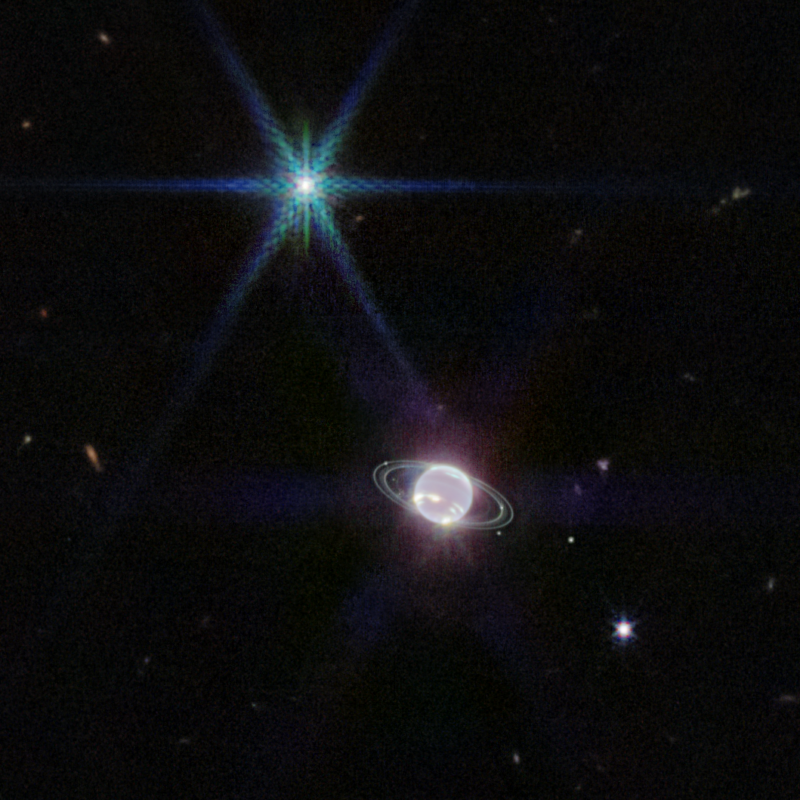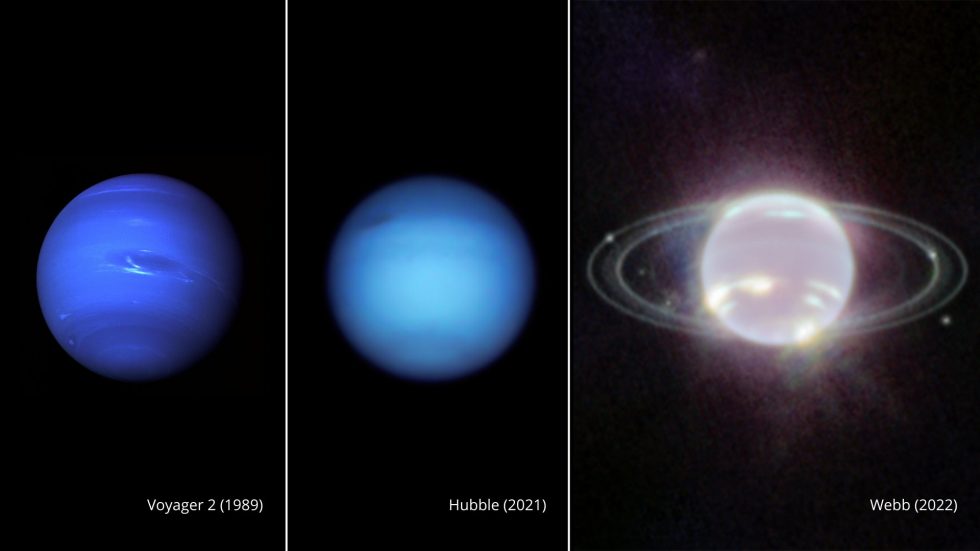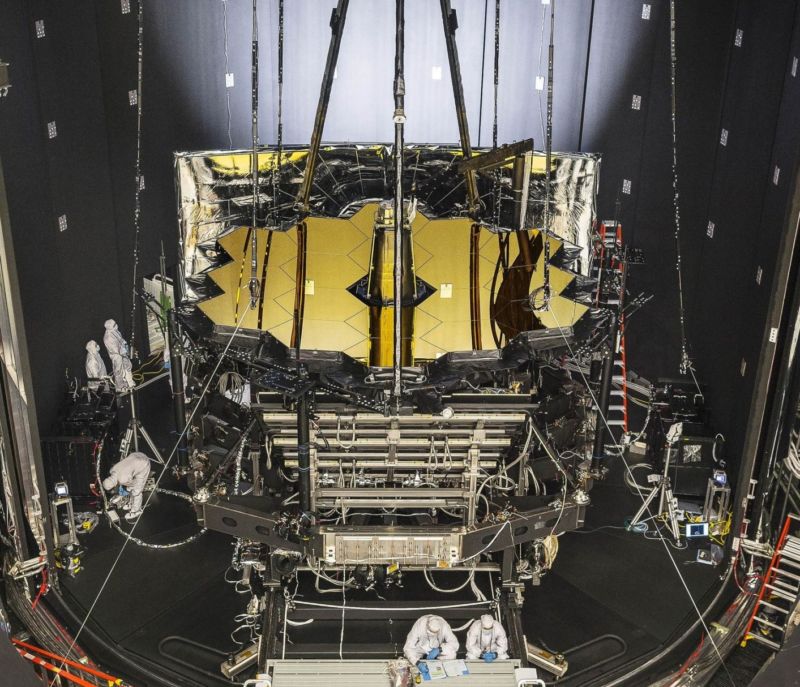
Scientists are wasting no time in pointing the powerful new James Webb Space Telescope all over the Universe, as well as into our own backyard. Recently, astronomers took data on the eighth planet from the Sun in our Solar System, Neptune. NASA released the first images of this world on Wednesday.
The third-largest planet in our Solar System, Neptune often appears bright blue in images due to the presence of gaseous methane. The Webb telescope, however, observes light in the infrared portion of the spectrum, so its "Near-Infrared Camera" photos show a ghostly white planet. This is because the methane in Neptune's atmosphere absorbs reddish and infrared light.
In the new view of Neptune, the exception to this is the planet's high-altitude methane ice clouds, which reflect sunlight before it can be absorbed by the methane. These appear as brilliant, bright features, NASA says.
Also prominent in the new image are Neptune's rings, which have not been directly observed since Voyager 2 flew by the planet in 1989. It is difficult to observe these rings from afar because they are close to the planet and obscured by Neptune's brightness. The Webb telescope found both prominent rings as well as bands of dust.
"It has been three decades since we last saw these faint, dusty rings, and this is the first time we’ve seen them in the infrared," said Heidi Hammel, a Neptune system expert and interdisciplinary scientist for Webb.
The Webb telescope also captured seven of the 14 known moons in the Neptune system. Most prominent in this image is Triton, above Neptune, with bright diffraction spikes. This color is due to the highly reflective frozen sheet of nitrogen ice that covers Triton.

This week NASA also revealed that there is a problem with one of Webb's Mid-Infrared, or MIRI, instrument's four observing modes. A mechanism that supports one of these modes, medium-resolution spectroscopy, has encountered friction during setup. NASA is assessing the problem and developing a path forward. NASA's program scientist for the Webb telescope, Eric Smith, said Wednesday that he does not anticipate this issue will ultimately preclude use of the instrument.



3175x175(CURRENT).thumb.jpg.b05acc060982b36f5891ba728e6d953c.jpg)


Recommended Comments
There are no comments to display.
Join the conversation
You can post now and register later. If you have an account, sign in now to post with your account.
Note: Your post will require moderator approval before it will be visible.